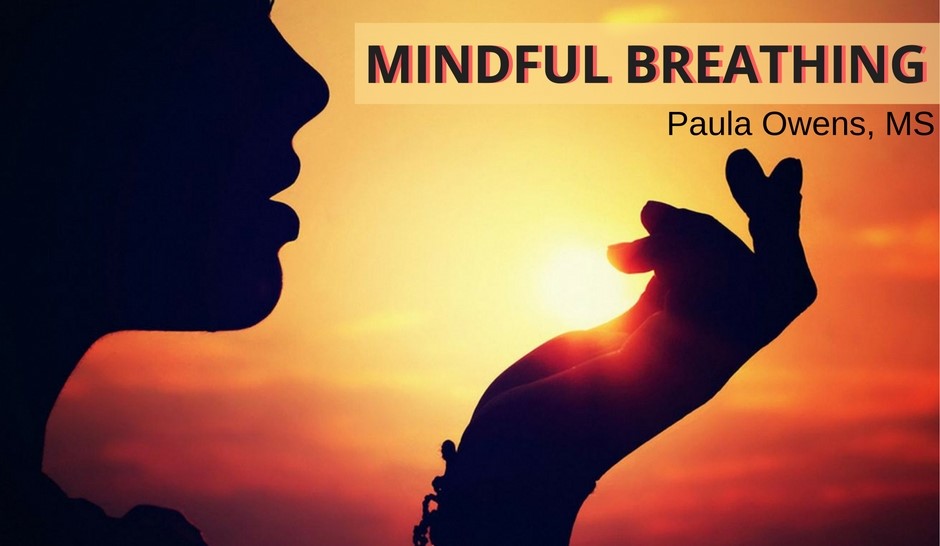Educating and Empowering You to Heal, Thrive, and Live a Happy, Healthy Lifestyle
Controlled Breathing: Mindful Breathing Exercises
 Our breath is a vital source energy. The practice of controlled, mindful breathing originated from yoga. Conscious, mindful breathing is known as pranayama, one of the eight limbs of yoga and includes different breathing techniques that aim to treat various physical and psychological conditions that have a positive impact on physiology, both in the mind and the body.
Our breath is a vital source energy. The practice of controlled, mindful breathing originated from yoga. Conscious, mindful breathing is known as pranayama, one of the eight limbs of yoga and includes different breathing techniques that aim to treat various physical and psychological conditions that have a positive impact on physiology, both in the mind and the body.
Deep breathing is not just relaxing, conscious breathing is a powerful way to decrease stress, increase awareness, balance hormones, and restore energy. It’s been scientifically proven to benefit the heart, the brain, digestion and the immune system.
Conscious breathing is one of the easiest, most effective ways to raise your metabolism and relax at the same time.
20 Health Benefits of Mindful Breathing
- restores balance to the nervous system (activates the parasympathetic (calming) branch of the nervous system) and strengthens vagal tone
- aids in detoxification and releasing toxins
- increases metabolism
- improves sleep quality
- revitalizes and energizes every cell in your body
- composes the mind and relaxes the body
- relieves pain and emotional tension
- helpful in treating COPD and asthma
- relieves symptoms of anxiety and depression
- releases endorphins that make us feel happy
- reduces post-traumatic stress disorder (PTSD) symptoms
- lowers blood pressure in those with hypertension
- stimulates digestion and helps elimination
- increases circulation and improves blood quality
- natural remedy for adrenal insufficiency by balancing stress hormones
- modify stress-coping behaviors and improves mood
- strengthens the immune system, the heart, and the lungs
- lowers levels of salivary cytokines that are associated with inflammation and stress
- breathing in a pattern while walking stimulates the lymphatic system and energizes the body
- changes physiology on a cellular level and encourages the body to heal naturally
Conscious, mindful breathing is your body’s secret weapon to managing stress and anxiety, boosting energy and awareness, and creating body balance.
Breathing and Emotions. Our breathing is influenced by our thoughts, and our thoughts and physiology can be influenced by how we breathe.
The typical American goes through more physical, mental and emotional stress in 30 days than their grandparents did in their entire lifetime! Chronic low-level stress accelerates aging, and is the root cause of many health issues and dis-ease.
When you’re stressed out, anxious or angry, the sympathetic (fight or flight) branch of the nervous system is activated and breathing becomes shallow, which produces a surge of cortisol and epinephrine, restricts blood flow to the brain, and increases inflammation, blood pressure and oxidative stress.
Breathing is also negatively impacted with excessive alcohol consumption, opioid drug use, poor posture, sleep deprivation, sedentary lifestyles, and those who sit the majority of their day. Poor breathing compromises oxygenation to the brain and body. Health problems and chronic disease are worsened by poor, faulty, shallow breathing patterns.
Mindful Breathing Exercises
Controlled breathing is an easy way to meditate, especially for those who have trouble meditating. These controlled breathing techniques and mindful breathing exercises will dramatically improve your health and restore balance – physically, mentally, emotionally, and spiritually.
Diaphragmatic Breathing activates the parasympathetic nervous system and deactivates the sympathetic nervous system. With diaphragmatic breathing, the deep abdominal muscles and diaphragm are engaged instead of the chest and neck muscles. Deep diaphragmatic breathing lowers anxiety, relaxes muscles, slows the aging process, and generates an inner feeling of peace and calm.
Most people are ‘chest’ and ‘mouth’ breathers, and seldom use their diaphragm to breathe. Diaphragmatic breathing can be done sitting, lying down, during yoga or while you’re walking. It’s a great breathing technique to correct faulty breathing patterns, and promote relaxation and awareness.
When you first learn the diaphragmatic breathing technique, it may be easier for you to learn while lying down.
- Place one hand on your upper chest and the other just below your rib cage. This will allow you to feel your diaphragm move as you breathe.
- Inhale deeply through your nose for the count of 6-8 seconds allowing your belly to expand. Try to fill your lungs. The hand on your chest should remain as still as possible.
- Slowly exhale through your nose for the count of 6-8 drawing your belly button in and down as your abdomen moves inward.
- As you breathe in deeply, think of oxygen reaching and recharging the cell of your body. As you exhale, envision all stress and tension melting away.
- Practice for 2-3 minutes or 20-30 breath cycles.
If you’ve never practiced diaphragmatic breathing, you may have to start slowly by inhaling and exhaling for 3-4 seconds and work up to 6-8 seconds per breath.
As you become more proficient and comfortable with diaphragmatic breathing, remove the hand placement and practice this controlled breathing exercise while walking, driving, at your desk, before bedtime or anytime you feel stressed.
The 4-7-8 Breathing Exercise. This breathing technique is a “natural tranquilizer for the nervous system.” It reduces tension, re-patterns your nervous system, calms your mind, and signals your brain to release GABA (a calming neurotransmitter) allowing your body to relax.
- Slowly breathe in through your nose for the count of 4, letting your belly expand, while your chest, jaw and shoulders stay soft and relaxed.
- Hold your breath for the count of seven without tensing your jaw, forehead or traps.
- Exhale slowly and completely for the count of eight.
- This is one breath cycle. Repeat three more times for a total of four breaths.
Practice four to eight cycles of the 4-7-8 breathing technique two to three times daily to bring your body more into balance. Practicing the 4-7-8 breathing exercise is especially helpful if you suffer from anxiety or insomnia.
Alternate Nostril Breathing also known as “nadi shodhana” is a simple, safe and effective pranayama technique that activates both hemispheres of the brain and helps to balance the nervous system resulting in physical, mental and emotional well-being.
This pranayama technique starts with an exhale.
- Using your right hand, take your ring finger and gently close the left nostril as you exhale through your right nostril.
- While the left nostril is still closed, inhale fully through the right nostril.
- Then, take your right thumb and close the right nostril as you release your ring finger from your left nostril and exhale fully through the left nostril.
- Finally inhale through the left nostril (right one closed).
- This completes one round. Repeat this series 4-7 times.
Breathing in through your left nostril accesses the right “feeling” hemisphere of your brain and activates the rest and relaxation branch of the nervous system. Breathing in only through your right nostril accesses the left “thinking” hemisphere of your brain, and activates the activity and action energy channel.
Researchers have found that breathing exclusively in and out of the left nostril lowers blood pressure, whereas breathing exclusively through the right nostril increases blood pressure.
Breath of Fire (energy breath) is a rhythmic, mindful breathing exercise that uses the diaphragm to pump the navel in and out with each exhale and inhale, respectively. This breathing exercise improves mental performance, increases cognitive function and boosts energy.
To practice the Breath of Fire, sit quietly. The inhale and exhale are strong, rapid and forceful. Keep the length of your inhalation and exhalation equal. Inhale through your nose relaxing your abdomen outward, and exhale forcefully through your nose by pulling your belly in. Concentrate on sniffing rapidly at the rate of one second per cycle. Breathe solely from your diaphragm, keeping your head, neck, shoulders, and chest relatively still while your belly moves in and out. Practice the breath of fire for one to three minutes.
Breath of fire is similar to another breathing technique called kapalabhati. The difference with kapalabhati is that the emphasis is on the exhalation being forceful and the inhale is more passive and relaxed.
Take a moment right now, even if it’s just a few minutes to practice stillness, quiet the monkey mind and just BREATHE! Shift your focus and recall a pleasant past experience. Feel gratitude and appreciation about the good things and people in your life. A consistent daily practice of these mindful breathing exercises is one of the best tools for improving your overall health and well-being.
Related Articles
- Reset Your Nervous System: the Best Natural Remedies for Stress Relief
- Tips to Cure Insomnia and Drug-free Sleep Solutions
- Video: This Simple Technique Makes a Huge Difference

